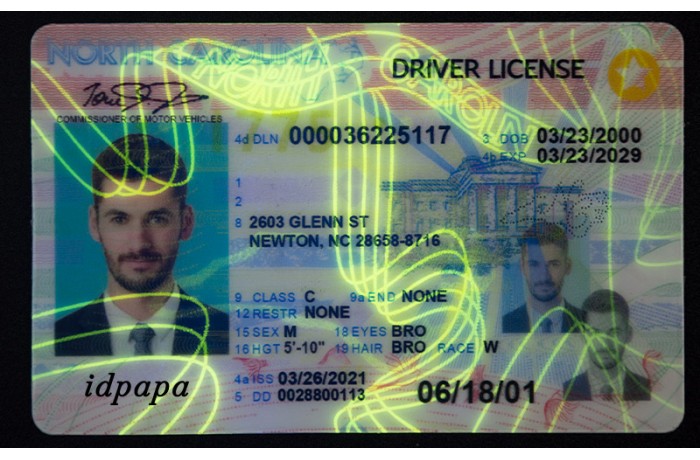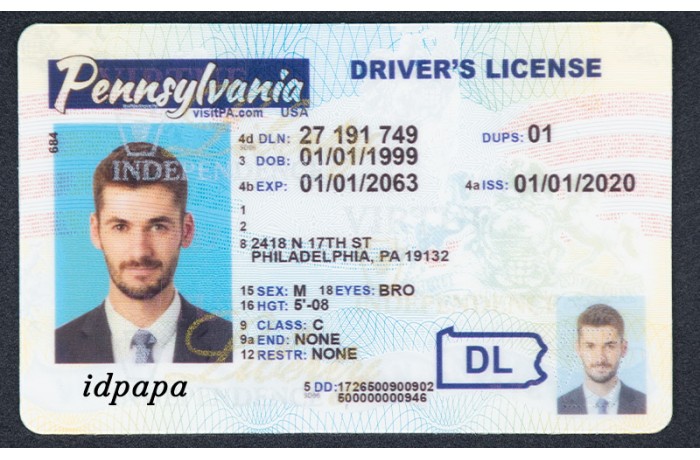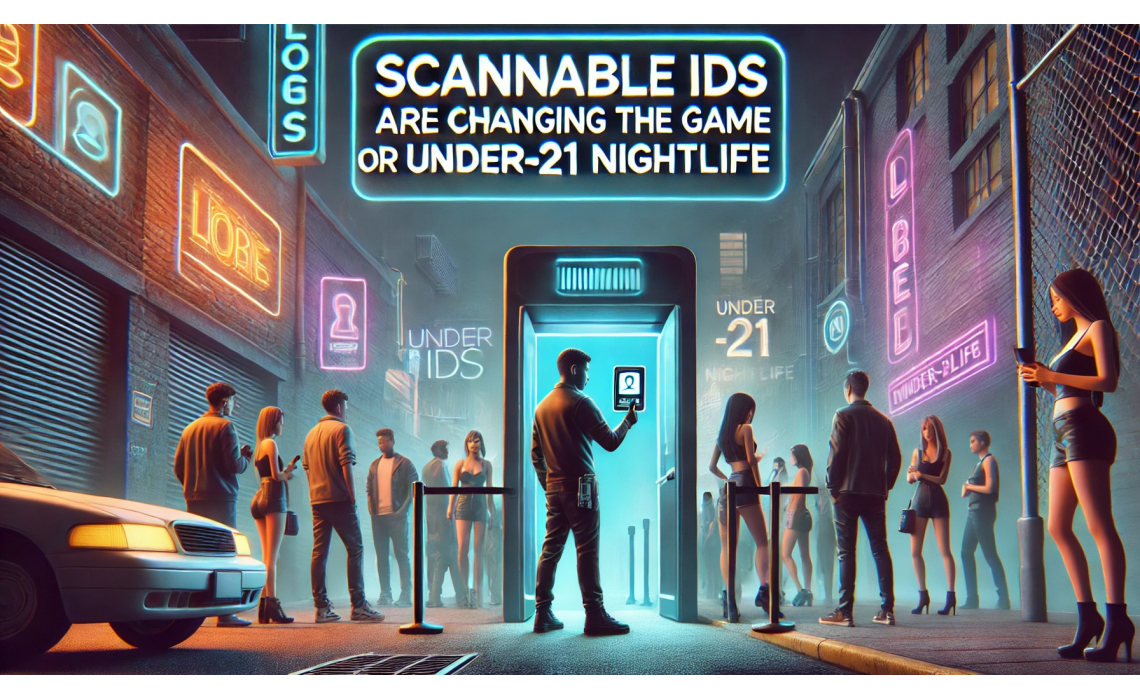Scannable IDs Are Changing the Game for Under-21 Nightlife
Scannable IDs Are Changing the Game for Under-21 Nightlife

The use of fake IDs has long been a part of nightlife culture, especially among underage individuals trying to gain entry into bars, clubs, and concerts. What once required crude DIY efforts has now evolved into high-tech, scannable fake IDs that are increasingly difficult to detect.
With the rise of AI-powered verification systems, barcode scanning, and biometric authentication, both fake ID producers and security personnel are in a constant race to outsmart each other. As technology advances, so do the methods used to bypass detection.
1. The History of Fake IDs in Nightlife
Fake IDs have existed for decades, but their methods of creation and effectiveness have changed significantly over time.
✅ Early Fake IDs (Pre-Digital Era)
●Handcrafted or photocopied driver’s licenses with altered dates.
●Basic forgeries using cut-and-paste techniques.
●Simple lamination overlays to create the appearance of authenticity.
✅ The 1990s and Early 2000s: Printing Revolution
●The rise of desktop publishing software made high-quality fakes more common.
●Inkjet printers and laminators enabled individuals to create more convincing IDs.
●Clubs and bars relied primarily on visual inspection, making detection inconsistent.
✅The Digital Age: Scannable IDs Enter the Scene
● Advanced fake ID shops began embedding barcodes and QR codes to mimic real government-issued IDs.
●Online markets for custom-printed scannable fake IDs emerged.
●Bouncers and security staff adopted ID scanners, forcing fake ID creators to evolve their methods.
2. How Scannable Fake IDs Work
Modern fake IDs have advanced to the point where they can often pass a basic scan. Here’s how they work:
✅ Replicating Real ID Data
●Fake ID makers purchase real driver’s license templates and modify them with fake details.
●They use software to encode barcodes that match the printed information.
●Some fake IDs even pull real DMV data to make them scannable.
✅ Barcode Duplication
●Advanced fake IDs contain scannable barcodes that mimic real government databases.
●Some high-end versions clone barcodes from real IDs, allowing them to pass basic scans.
●Low-quality fakes may scan as invalid or display incorrect information.
✅ Hologram and UV Printing Replication
● Many fake IDs now feature holographic overlays and UV markings.
● Cheap versions use printed holograms, which can be detected by trained security staff.
● High-end fakes mimic security features accurately enough to fool casual inspections.
3. The Impact of Scannable Fake IDs on Under-21 Nightlife

The increasing sophistication of fake IDs has changed the nightlife experience for underage individuals and created new challenges for businesses.
✅ Easier Access to Nightclubs and Bars
●Scannable fake IDs allow under-21 patrons to enter bars, concerts, and exclusive events.
●Many venues rely solely on barcode scans, making it easier for high-quality fakes to pass.
●Underage drinking incidents have increased in some cities due to fake ID accessibility.
✅ Higher Risks for Nightclubs and Bars
●Establishments that serve underage patrons face heavy fines and liquor license revocation.
●Increased compliance checks from law enforcement put businesses at risk.
●Repeated violations can result in permanent business closures.
✅ Social Media and Fake ID Culture
●Online communities share reviews of fake ID suppliers, making it easier to buy high-quality versions.
●Platforms like TikTok, Reddit, and Instagram showcase ways to pass ID checks, contributing to the spread of misinformation.
●Some individuals create group orders to get bulk discounts from fake ID manufacturers.
4. The Fight Against Scannable Fake IDs
As fake ID production evolves, nightclubs, law enforcement, and technology providers are implementing new strategies to detect and prevent their use.
✅ AI-Powered ID Verification
●Nightclubs now use AI-based ID scanners to detect inconsistencies in real-time.
●AI can recognize subtle font changes, improper spacing, and incorrect barcode encoding.
●Some systems compare real-time selfies to the ID photo for biometric verification.
✅ Cross-Referencing with Government Databases
●Some ID scanners are connected to DMV and government verification databases.
●If the ID number or barcode does not match official records, the system flags it as fake.
●This is one of the most effective methods of detecting high-quality fakes.
✅ RFID and NFC-Embedded Smart IDs
●Some regions have introduced smart driver’s licenses with NFC and RFID chips.
●Fake ID creators cannot easily duplicate these chips, making replication difficult.
●ID scanners that check for RFID chip responses can detect fake cards instantly.
✅ Training Staff to Recognize Fake IDs
●Clubs and bars now provide specialized training for bouncers to spot fraudulent IDs.
●Many businesses use multi-layer verification (visual checks + scanning + questioning).
●Security teams are trained to ask for additional verification, such as a second ID or signature match.
5. The Future of Age Verification and ID Security
As the arms race between fake ID creators and security technology continues, new innovations will shape the future of age verification.
✅ Biometric Scanning as the New Standard
●Many countries are moving toward facial recognition ID verification at venues.
●Biometric screening reduces reliance on physical ID cards, making fraud harder.
●Some events now require pre-verified digital IDs for entry.
✅ Blockchain-Based Digital IDs
●Governments are exploring blockchain-based IDs that prevent tampering.
●Blockchain allows instant verification of age and identity without exposing personal details.
●Fake ID vendors cannot manipulate blockchain records, making counterfeiting impossible.
✅ The End of Physical IDs?
●Mobile IDs and digital driver’s licenses may replace physical cards.
●Future systems could use iris scanning or fingerprint verification instead of traditional ID checks.
●Nightclubs and event venues may adopt app-based authentication, reducing the risk of fraud.
Conclusion
The evolution of scannable fake IDs has drastically changed under-21 nightlife, making it easier for individuals to bypass security. However, technology is catching up with advanced detection methods such as AI-powered verification, biometric scanning, and blockchain authentication.
While fake IDs will likely continue to evolve, bars, clubs, and law enforcement are adapting faster than ever, ensuring that nightlife remains safe, legal, and fraud-resistant. In the future, traditional ID checks may become obsolete, replaced by biometric and digital verification systems that make identity fraud nearly impossible.


